No products in the cart.
How Can Races Increase Female Participation Rates?

Silke Koester lives in Boulder, CO. She co-founded the local running club, the Rocky Mountain Runners, and runs on the La Sportiva Mountain Running Team. Silke works full-time in the educational non-profit world trying to improve school for under-served kids around the country. She enjoys beekeeping and embarking on overly ambitious DIY home remodeling, landscaping & carpentry projects. Her most recent creation is a her daughter, born in September 2017!
Share This Article!
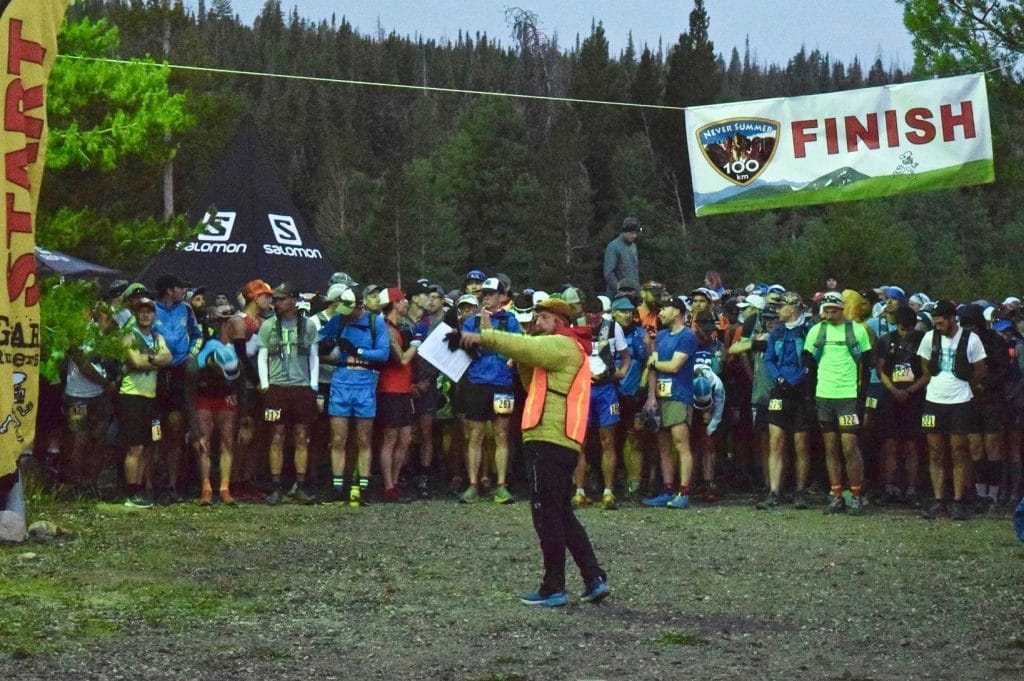

By: Silke Koester
What can races do so they might be more inclusive of women and therefore attract more participation from women runners?
This summer, in particular, there was an uproar on social media over races awarding more of their male top finishers than female top finishers (Vermont 100, Migu Skyrunner Olympus Marathon, MaXi-Race France & World, International Veia Sky Race), races forcing women to run a shorter distance than men (WRMA), and race coverage being more focused on the men’s field verses the women’s (UTMB’s live race coverage with the exception of the few hours when Rory Bosio joined the live coverage and rocked it!). I wish it weren’t but this summer wasn’t unusual in this regard.
I constantly hear race organizers (even those tangled in controversy) state they they would love to see an increase in women’s participating at their event. But do they actually do anything to boost their female participation numbers? Beyond simply equaling their prizes and recognition, I’d like to offer a few actions for races to consider with the intent to create an environment that is inclusive of its female customer-base, by recognizing that the male body is not the default body of a runner and by honoring the fact that the women’s race is not a sub-category of the men’s race. Since we all recognize that race directing is a business, none of these suggestions would cost race organizers anything to implement!
The male body is not the default body of a runner.
Here are a few simple ways that a race can explicitly acknowledge that women’s bodies are different than men’s bodies and yet capable of the same feats.
Provide women’s specific race t-shirt sizes.
If a race provides t-shirts to participants or finishers they should offer both men’s and women’s sizes. My excitement for running the Aspen Backcountry Trail Marathon back in 2012 and the Pikes Peak Ascent in 2013 was deflated when I was handed a men’s size S. At the time, they did not offer any women’s specific sizes. Men’s sizes are not “unisex.” If there are financial constraints to providing two different styles of shirts, then don’t provide shirts at all – give everyone a gender-free mug!

Create a pregnancy deferral policy.
Even if this only applies to a small percentage of women, this kind of policy recognizes that men can participate in a race regardless of impending parenthood while most women cannot. Western States made headlines this year by announcing an explicit pregnancy deferral policy which is intended “to allow women with accrued lottery tickets who become pregnant prior to the lottery to skip up to three lottery cycles and maintain their consecutive lottery status.” Women who have run qualifying races year after year in order to continue entering the lottery in the hopes of one day having the chance to run the race would have to start back at 0 if they missed a qualifying race due to pregnancy. This obviously means that less women will ever get the chance to run the race. UTMB, which also has difficult qualification standards and a lottery process, has come under criticism for not allowing a race deferral for pregnancy. They do allow priority registration for the same race in the future if the runner has a non-chronic osteo-articular or muscular injury. I have heard the UTMB race organizers argue that becoming pregnant is a choice, while sustaining a running injury is not. UTMB does, however, offer race registration refund if a runner can no longer participate due to pregnancy or childbirth.
Support breastfeeding runners.
In light of the viral photo of Sophie Power breastfeeding her baby while running UTMB, Cat Bradley’s feature of Erin Shaw breastfeeding while running the Bear 100M this year, and since I and countless other women have had to calculate the logistics of breastfeeding while ultra running, races can easily & explicitly support nursing mothers. Where a race states on its website what will be offered at the aid stations (bananas, port-a-potties, hot soup, etc), races could signal where there might be a generator or outlet that a female participant could use to plug in her breast pump. This would enable her to complete the race without compromising her ability to provide breastmilk for her baby.


The women’s race is not a sub-category of the men’s race.
Any race that allows men and women to participate are in essence running two separate races at the same time. With that in mind, here are a few ways race organizers could present the two races separately and equally:
List race results separately for men and women.
Most races list their race results in order of overall finishers and some offer the option of filtering the results by male/female category. I propose that races should default to presenting male & female race results separately and side-by-side. When races results are listed cumulatively, the top few names will usually be male. The first place male gets to be the very first name you see while the first place female’s name is buried in the list among a bunch of other names.

[Example: The race results page for this year’s Bear Chase race series lists the top 5 overall finishers for each distance meaning that you won’t see very many women’s names unless you go the extra step of filtering specifically for the women’s race. Furthermore, women’s 50K race winner, Kim Dobson, is listed as 3rd instead of 1st place like the men’s race winner.]
Enable women to line up at the front of the race start.
Take a look at race start photos, do you see any women on the starting line? The fastest women are usually tucked in further back amongst the crowd of men. Of course, no one is forcing the women to line up further back & most races don’t seed the start line, but the reality is that men will push their way to the front regardless of whether or not they should be starting up there. I can’t tell you how many men literally elbowed me in the face to make sure they were 5cm ahead of me at the starting line of UTMB. Therefore, races should split the start line into two halves so that women have the opportunity to start at the very front and amongst their own competitors. A guy with an ego will complain that a woman who is slower than he should not start “ahead” of him. What he fails to realize is that it doesn’t matter whether or not she’s faster than him. She’s not racing him. Her speed relative to his is irrelevant. The women’s race should not be compromised by having to navigate a stampede at the start when the lead men do not have this obstacle. Women miss the camaraderie of lining up shoulder-to-shoulder with their (female) competitors in the way that the men do. I have often been unable to see any women runners and give them a good luck hug at a race start because I’m drowning in a sea of men. Allowing women to have their own start line honors the fact that they are running their own race.
 Open equal spots for men and women to register.
Open equal spots for men and women to register.
If the race participation is capped at 200 people total, races could open up 100 spots for the men’s race and 100 spots for the women’s race, with waitlists for both races. Similarly, if a female entrant gives up her spot, the race should fill it from the female waitlist. If the women’s waitlist is exhausted, then the remaining spots can be opened up to the men’s race, and vice versa, so that the race is able to accomplish its goal of selling out.
Schedule the race start so both race winners finish before dark.
Many race organizers schedule the start of the race to enable the lead man to race the sun to the finish. These races neglect to consider the finishing time of the lead woman. UTMB’s 5pm start and Leadville’s 4am start mean that the first man finishes before sunset while the crowds and cameras are out in full force. Hours later, the first woman will finish in total darkness to noticeably less cheers and media. Wherever logistically possible races should consider changing their start time so that the both the first male and first female have the opportunity to finish before dark.
 Feature photos of female participants on a race website.
Feature photos of female participants on a race website.
Scan the media on a given race website or social media. Are the featured photos primarily of men? Races should make an effort to feature photos of the female runners. Visual media is a powerful influencer. A woman searching to sign up for a race will notice the photos of women and will likely be motivated to sign up for a race that showcases women!

[Example: The Run Rabbit Run race website currently has 4 photos that automatically rotate through their homepage banner. Two photos feature just 1 runner and she is a woman in both photos. The other 2 photos show several runners both male and female.]
My suggestions are not meant to upset race organizers or male racers. I’m not asking them to consider “special treatment” of women. My goal is simply to offer women an equal & equitable place at the table.

Call for comments:
What ideas do you have to help grow women’s participation at races?
About the Author

Silke Koester lives in Boulder, CO. She co-founded the local running club, the Rocky Mountain Runners, and runs on the La Sportiva Mountain Running Team. Silke works full-time in the educational non-profit world trying to improve school for under-served kids around the country. She enjoys beekeeping and embarking on overly ambitious DIY home remodeling, landscaping & carpentry projects. Her most recent creation is a her daughter, born in September 2017!
Share This Article!


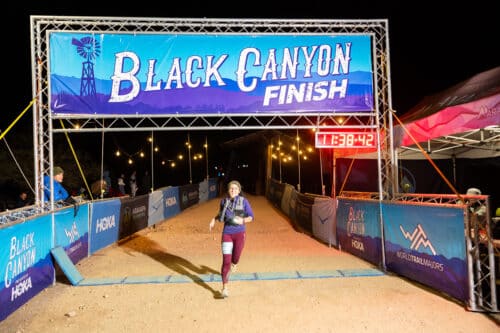



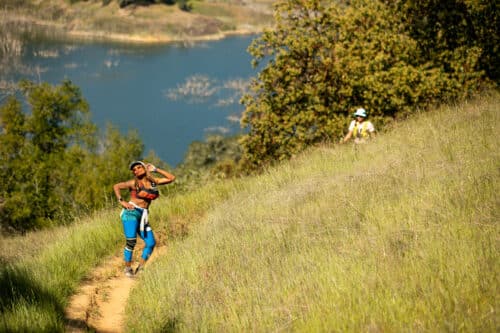
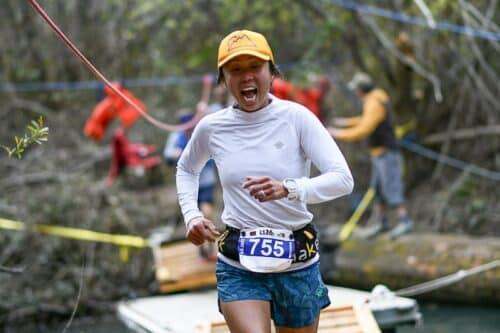
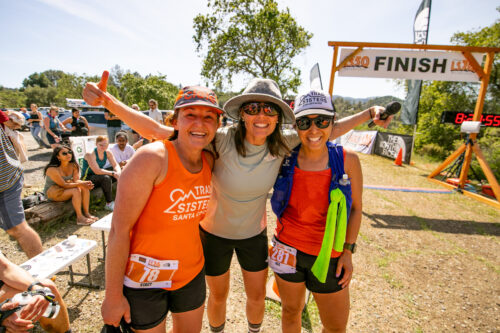
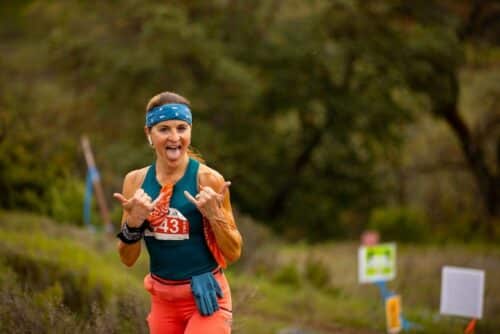
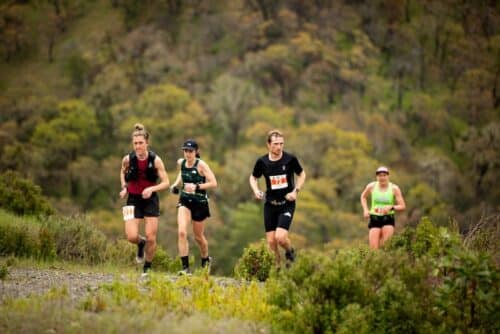

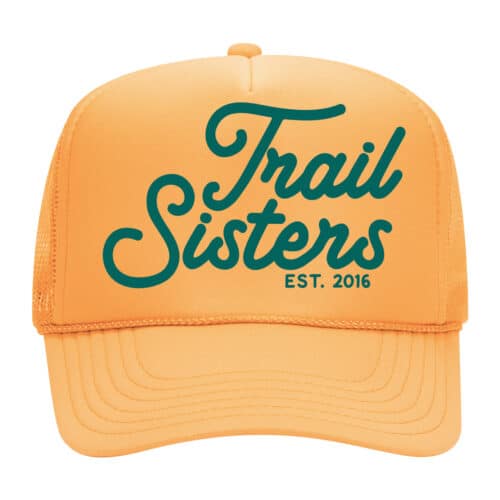
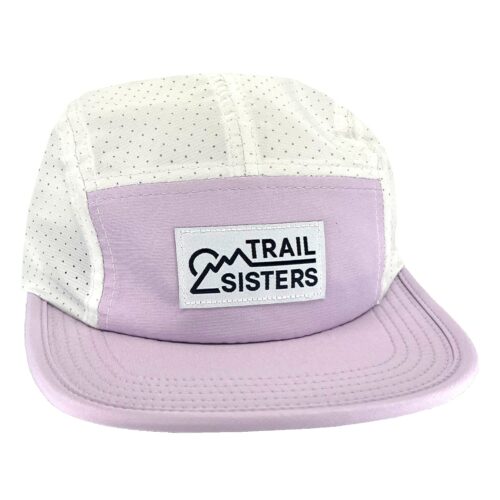
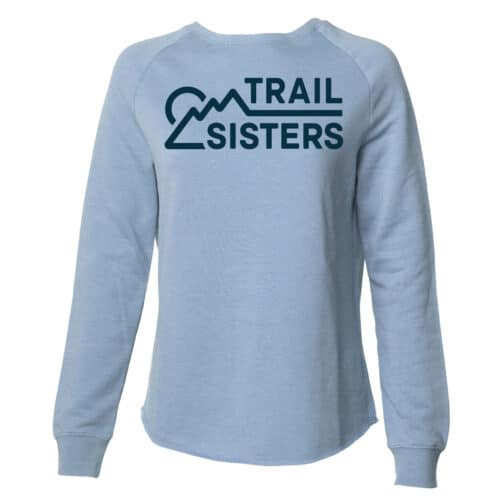
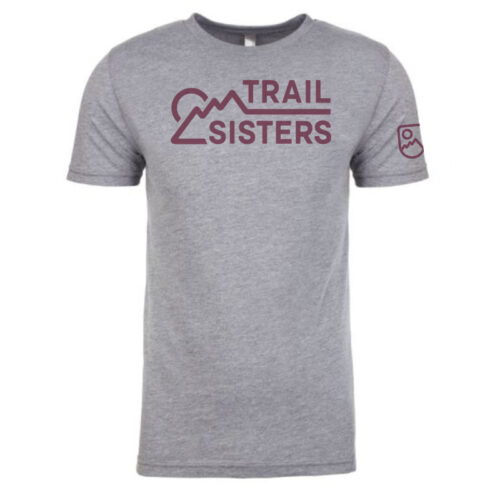
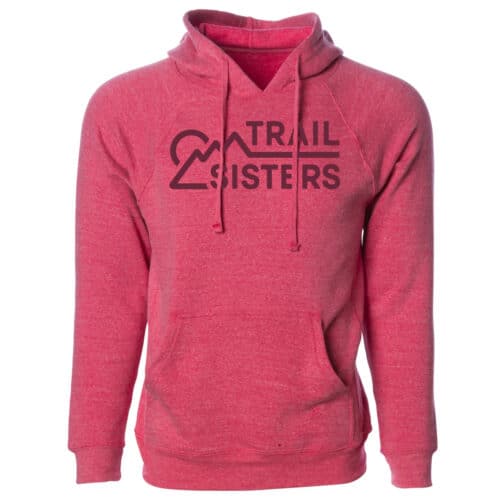

13 Responses
These are great ideas! I am much more likely to attend a race where I know there are women’s sized shirts because it means women have likely been thought about throughout the race.
It would be pretty easy to examd these ideas to help trans and non-binary runners feel welcome too. For example, instead of saying “deferral for pregnant women”, we could use “deferral for pregnant runners” or “deferral for expectant parents”. That way both parents could be there if a baby was arriving on race day and no one would lose their option to race again in the future!
Yes! Thank you, Andrea, for bringing up the subject of trans and non-binary runners — this is something I hope to dive into in an article about diversity in trail running (I deliberately though perhaps mistakenly left it out of this specific piece)! Eliminating certain gender labels can definitely help ALL people feel welcome (for example, some races in their race registration allow runners to self-select what style shirt they’d like) and allowing any expectant parent to defer their race entry (while keeping their spot in the lottery) if their baby is born/adopted around the race date is a great way to be inclusive of all runners regardless of their gender.
Great point about adoption too! Thanks for the great content and I look forward to more
Great ideas!
Awesome article and great ideas! I also think the more women participate and the longer women are engaged in the sport, the more we’ll see women winning the overall. In ultra distance it seems more likely anyone could win regardless of sex versus other sports. I hate to say it, but until this starts happening it will probably be an uphill battle, but certainly one worth fighting!
I strongly support many of these suggestions – certainly, having separate race results (since we’re in separate races) would be appropriate – and I think would do much to help get the point home for more men AND women. Most people haven’t come from ‘world championship’ IAAF backgrounds, where they regularly see men and women running separate events (as on the track). For convenience, we run at the same time.
One thing I think we need to consider as women, though, is whether we WANT all these things for ourselves. We’re screaming that we want to be “equal” from the rooftops. Well, “fair does not mean equal.” If men need to be provided urinals, it doesn’t mean women should, too, so that we’re “equal.” If Jimmy wears glasses at school, Suzy shouldn’t get glasses, too, so she’s “equal.” When I stepped back to consider the idea of WRMA “forcing women to run a shorter distance than men”, which came to a head a few years ago, I started to think about it more. The reality is, women run a given distance slower than a man. So, the toll on our bodies is greater over the same distance. A man running UTMB might finish in 24 hours. A woman, 30 hours. That means a woman is putting a far greater strain on her body. She’s out there 25% more time! Women, whilst we shout for “Equality” is it at cost to ourselves? Do we really want “Fairness?” Fair means we all get what we need. Do women need to run just as far as men in distance (but always more time and damage to body) or do we need to have fair access to running? Let’s not think of ourselves in relation to men, but merely in our own right. What do WOMEN want out of running?
Hi Bernadette – You’re absolutely right that equal does not mean equitable. You’re also absolutely right that the goal is not to have women do the same thing as men because that implies that women have to meet the standard of what “a man can do” in order to be worthy of equal treatment. You raise an interesting question about whether women are putting more strain on their bodies than men when completing the same distance. Did you follow the Big’s Backyard Ultra that just took place this week? In this event the distance (one 4.166667 mile loop) and time limit (1 hour) is fixed, so it takes the same time for any runner (male or female) to cover the same distance (for example, any runner who completes 100 miles does so in 24 laps which must be completed no more and no less than 24 hours; likewise, any runner who runs for 24 hours will complete no more and no less than 100 miles). The race goes on and one until there is only one person left and that person wins. This year, it became a battle of the sexes between Johan Steene and Courtney Dauwalter who each ran 67 laps in 67 hours until, in the end, Courtney could no longer continue and Johan completed a 68th lap in the 68th hour to win. In this case, since the distance and time through the 67th lap was the same, you could argue that the physical strain to complete the challenge was the same. In this example of one, since the race came down to one man vs one woman and the distance & time was so extreme and completely up to the participants, this demonstrated the HUMAN potential to run regardless of gender. The question of whether or not women want to run as far as men run is a separate issue – I think that as long as a woman is given, at the very least, the same opportunity to run then it is her choice whether she wants to do it. Women shouldn’t be forced to do what men do (this implies that the what a man can do is the pinnacle of human potential). Women should not be held to the same standards (time/distance/speed/effort) as men (this automatically mislabels women with comparative adverbs such as “slower”). Women should also not be denied to opportunity to complete physical challenges that are enormous, inspiring, audacious and bold. The goal is for us each to be able to freely explore our own potentials and limitations without anyone else telling us what those limits are or what our potential may be because of our gender.
Thanks for this great article Silke. Another two ideas to increase women’s participation would be to 1. Increase cut-off times for women (compared to the cut-offs for men) and 2. Lower the entry requirements for women in races which require ‘points’, such as UTMB.
While these may seem like requesting favours for women, they really do not. Women’s races are separate from men’s, and women run slower. So a cutoff which is the same for men and women actually discriminates against women. Similarly with entry points. Because women run slower, and the cutoffs are the same for men and women, it is more difficult for women to gain the required points.
I hope that we can get all these ideas through to race organisers.
Hi Anna – You raise an interesting point suggesting that cut offs and entry requirements should be different for men and women. It comes down to whether the time limit / entry requirement (which usually has to do with making time cut-offs) is set based on the capabilities of a male body. I don’t know these numbers exactly and I’m not sure if anyone has this data but it would be interesting to know what percentage of women and what percentage of men who start an ultra are cut off before finishing? If it turns out that women are disproportionately cut-off then it might suggest that the time standards are discriminatory.
I was caught out by a tight cut off set with men in mind this year in a 50 miler but it has forced a discussion with the organisers. After telling us the cut offs were strict repeatedly, they aded 15 minutes on to it to let half of the female field through otherwise the podium would have been very empty. The bugger is, if I had run it into the aid station, I would have made it but I decided to walk it in with a bloke who wasn’t doing so well because I knew I wasn’t going to make the original cut off in time.
Hi Silke, I really enjoyed this article and there are some great ideas that are easy to implement. Do you have any figures/stats on female participation in ultras?
I wrote this article recently that you on some related topics: https://runningmann.co.za/2018/09/15/unconscious-sexism-road-running/ (it is from a heavily South African perspective).
The two big SA ultras Comrades (25k entrants) and Two Oceans (13k entrants) have about 20% and 30% female participation respectively (no ballots but both sell out). Interestingly the Two Oceans half marathon with 16k entrants is 55% female.
Hi Stuart – Women’s participation rates vary significantly between running events. Road races in the US, for example, have majority female participants while selective 100 milers like Western States have only 20% female participation, and European 100 milers like UTMB have less than 10% female participation. It boils down to both accessibility and culture shifts. It wasn’t long ago that road races in the US had very few female participants but thanks to a culture change that inspires women to run, we’ve seen a dramatic increase in women running road races.
I absolutely love so many of these ideas! I know that for the Yeti 100 this year (and all future years), the lottery was set up to allow in ~50% women, even though it was an extremely competitive lottery. I’d love to see more races set up that way, and apparently it’s possible (and easy!) to set up. And the idea of listing results separately (but next to each other) for men and women is genius. I wonder if some of us could petition Ultrasignup to consider this in their next site upgrade? I realize there are other race results pages, but this seems to be the big dog in town, and if they make adjustments, it would be a real signal to the industry. That said, I do believe that Ultrarunning magazine has made a really strong effort lately to be as equitable as possible in their representation: between contributors, race photos, race reports, and product reviews, they are making a real effort to represent men and women equally in our sport, which is really refreshing to see, and makes a huge difference. And finally, if we want race directors to implement these ideas… we need more women race directors!